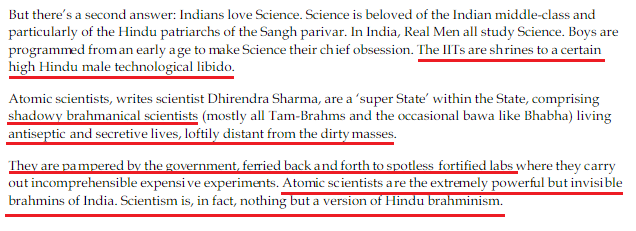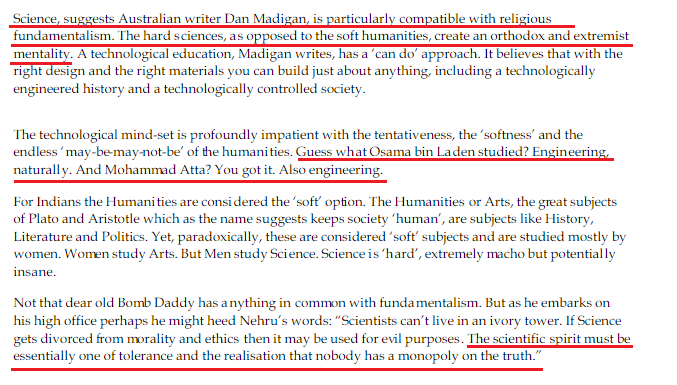On Wednesday few ’eminent’ commentators on Twitter started raising alarm that the government had decided to stop extending free treatment to those patients suffering from Tuberculosis who don’t have an Aadhar card:
If you have TB, but not an #Aadhaar, please spread it and die: GoI to citizens.
Wonder what creators of Aadhaar feelhttps://t.co/d0ptgtCHCU— Saikat Datta (@saikatd) June 21, 2017
Aadhar is now compulsory for free TB treatment under the RNTCP. Let that sink in. pic.twitter.com/iBiIMTtUYb
— Peglet (@PedestrianPoet) June 20, 2017
Taken on face value, this was certainly a serious issue as denying someone free treatment for a life threatening disease just because he/she hadn’t yet managed to procure an Aadhar card didn’t make sense. This situation would turn out to be very grave as Tuberculosis is largely known to affect those belonging to the lower strata of the society who in most cases would not be able to afford to pay for good quality treatment.
But as people were getting stumped by the supposed notification, Twitter user “Spaminder Bharti” (display name) decided to dig in a bit deeper.
The news was incidentally covered by the leftist propaganda blog Scroll, and predictably things weren’t as straightforward as they seemed. The article mentioned a notification by the Health Ministry that states that those who seek cash assistance under the government’s tuberculosis treatment scheme would have to show Aadhar in order to avail the cash benefits provided under the program.
The report then proceeded to quote a “source” to spin a possibility that the patients who avail the free treatment under the program would need to have Aadhar even if they don’t want to avail the cash assistance. Incidentally the same source later in the report also ended up clarifying that there was no question of government hospitals denying treatment to someone who doesn’t have an Aadhar. According to the source, the patients availing this scheme would actually end up getting Rs 3000 from the government if he/she had an Aadhar card or just had managed to apply for one.
The whole controversy is based on a 16th July notification [PDF] by the Ministry of Health and Family Welfare. The government currently administers tuberculosis treatment via its scheme called Revised National Tuberculosis Control Programme (RNTCP) and web application called Nikshay. The notification stated that if the patients wished to avail the conditional cash assistance, which was part of the scheme, they would have to furnish an Aadhar Card for the same.
The notification also stated that in order to provide a hassle free cash assistance under the Nikshay scheme, the agencies would first make all the existing beneficiaries aware about the requirement of Aadhar via individual notices and publicity through the media. The agencies would also have to ensure that convenient Aadhar enrollment locations are provided to those beneficiaries who aren’t able to apply for the same due to unavailability of center in their vicinity.
Hence nowhere does the notification either mention or even insinuate that those seeking treatment for TB would have to have to furnish an Aadhar card.
The cash benefit scheme incidentally seems to chiefly involve those patients who choose to avail a private treatment for their illness. Those patients who would be visiting private facilities would be eligible for a transfer of Rs 2000 and the private players would receive Rs 250 whenever a patient is successfully diagnosed according to guidelines and would also receive Rs 250 per month per patient and a payout of Rs 500 once he/she is treated. In case of a patient with complications, the compensation can rise to about Rs 6,750.
Also the involvement of private establishments are necessary in the fight against TB as has been been detailed here, thus the government is justified in providing the incentives while if someone avails treatment for TB at government institutions is already free.
Incidentally another propaganda blog named The Wire too decided to carry this news and ironically ended up proving that this notification about making the Aadhar compulsory might actually be a blessing in disguise. According to the report, several health workers and patients were not even aware that they were eligible for any sort of cash transfer and have only realized so after getting the Health Ministry’s notification.
Also the government’s intention to link the cash transfers to the beneficiaries makes sense as the government in its effort to completely eradicate tuberculosis is planning to substantially increase its investment. According to this report, in order to fully implement the proposed National Strategic Plan (2017-2025) which should bring down tuberculosis infections by 80%, the government would have to spend a whopping Rs 16,649 crores in the period of 2017-2020, which turns out be an increase of 400% over its existing expenditure.
So it makes sense that the government would want to ensure that the money reaches the right persons and doesn’t get siphoned off. Hence it probably wishes to put in place a Aadhar enabled benefit transfer system which should plug the leaks.
The whole plan of the government though comes down to implementation. Even though reports claim that 99% of the Indian adults have an Aadhar card, it remains to be seen if the government provides convenient facilities as promised to those patients who are yet to get one.
Editor’s note: The above report’s based on inputs by @attomeybharti, follow him here















